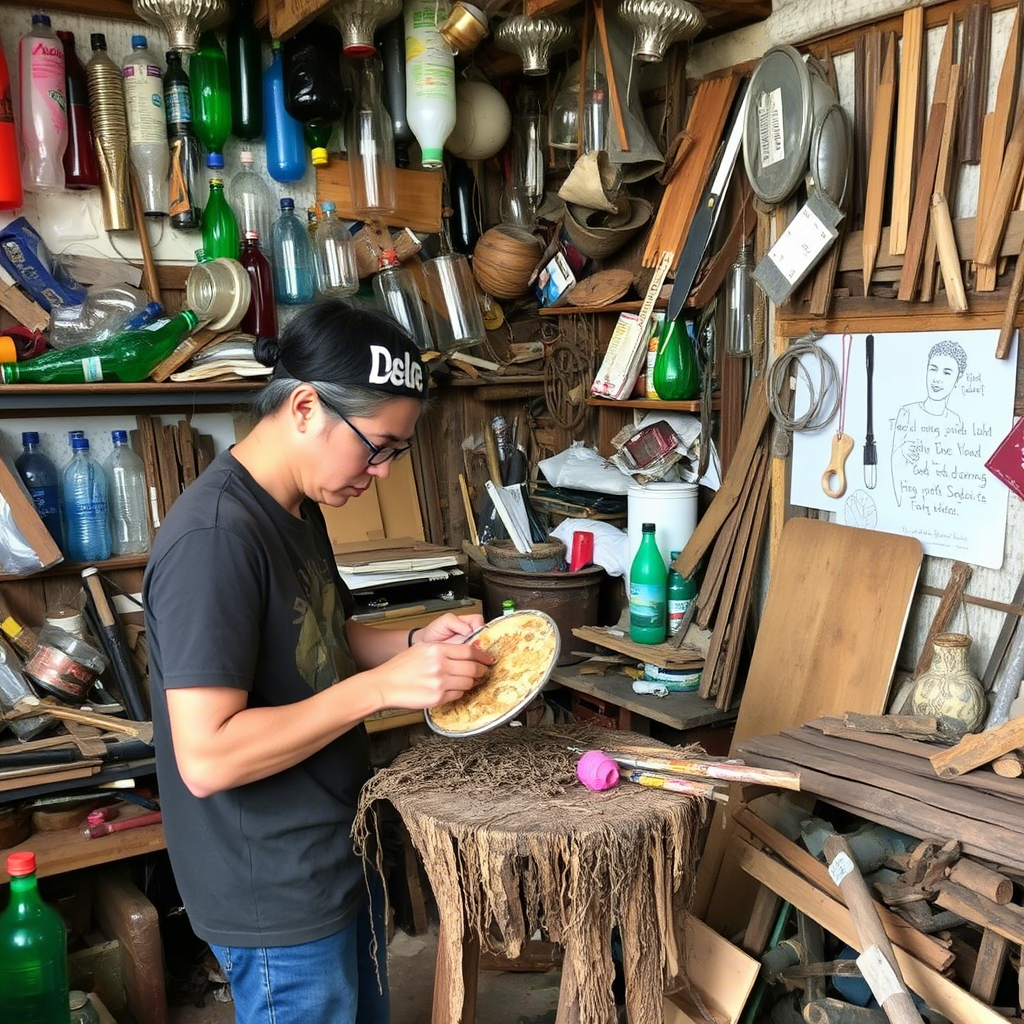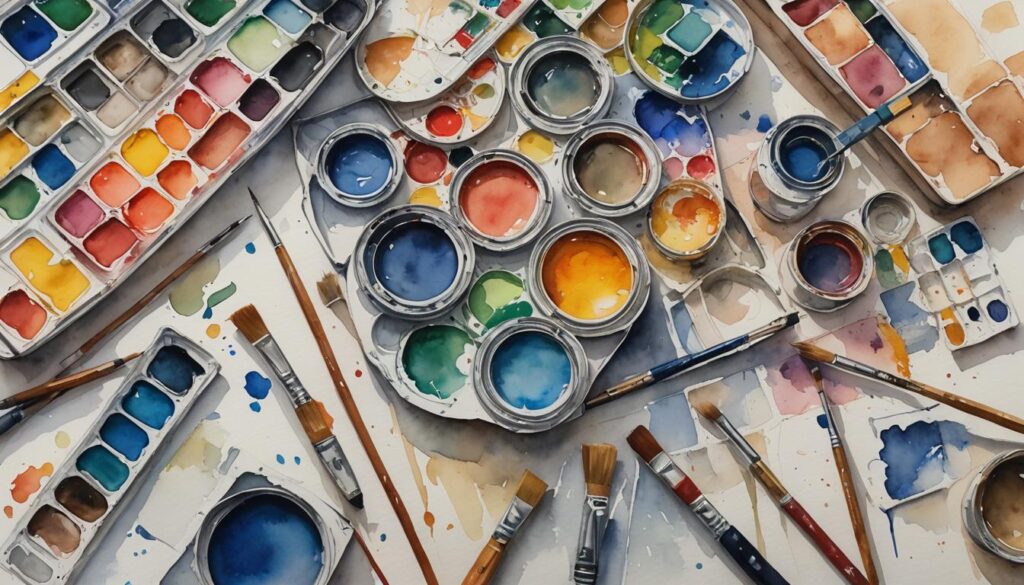Creating art doesn’t have to be an expensive endeavor. With thoughtful strategies, you can acquire high-quality art materials without straining your budget. Here’s how to find quality yet affordable art supplies:

1. Identify Essential Art Supplies
Before shopping, determine which materials are essential for your projects. Beginners can start by focusing on versatile items like sketchbooks, pencils, and basic paint sets to experiment with different techniques and identify their preferences. This focus prevents unnecessary spending. Common essentials include:
2. Explore Affordable Art Supply Retailers

Several retailers offer quality art materials at reasonable prices. These retailers are known for their reputation, wide range of products, and frequent discounts, making them great options for budget-conscious artists. For instance, Hobbycraft frequently offers “3 for 2” deals on paint supplies, while GreatArt provides a price match promise to ensure competitive pricing. Consider the following:
- Hobbycraft: Offers a wide range of art supplies with frequent promotions like “3 for 2” deals on selected products.
- The Works: Provides artist supplies at discounted prices, including paints, brushes, canvases, and easels.
- GreatArt: Boasts over 50,000 products with a commitment to low prices and a price match promise.
- Crafty Arts: Features a variety of art and craft supplies with regular discounts and special offers.
3. Leverage Online Marketplaces
Online platforms like eBay, Amazon, and Etsy can be treasure troves for discounted art materials. To spot reliable sellers, check for high ratings, detailed product descriptions, and customer reviews. Use filters to sort results by ratings or price, and take advantage of advanced search options to narrow down listings to specific categories or trusted sellers. Be cautious of deals that seem too good to be true and avoid sellers with limited or negative feedback. Look for sellers offering bulk supplies or clearance items.
4. Attend Art Supply Sales and Clearance Events
Keep an eye on seasonal sales, clearance events, and warehouse sales from art supply stores. Subscribing to newsletters from retailers like Hobbycraft and The Works can alert you to upcoming promotions.
5. Consider Student or Membership Discounts
If you’re a student or part of an art organization, inquire about potential discounts. Stores like Michaels and Blick Art Materials offer student discounts, while organizations such as the National Art Education Association provide resources and discounts for their members. Some retailers offer reduced prices for students or members of certain art groups.
6. Opt for Store Brands or Lesser-Known Brands
Many stores have their own brands that offer quality comparable to well-known brands but at a fraction of the cost. For instance, GreatArt provides private label brands like I LOVE ART, Gerstaecker, and Artist Junior, which offer essential materials across various techniques at competitive prices.
7. Buy in Bulk
Purchasing supplies in bulk often reduces the cost per item. This approach is particularly beneficial for frequently used materials like canvases, paper, and paints. Retailers like GreatArt offer a wide selection suitable for bulk purchasing.
8. Join Art Communities
Engaging with local art communities or online forums can provide insights into where to find deals. Members often share information about sales, discounts, or lesser-known suppliers offering quality materials at lower prices.
9. Utilize Price Matching Policies
Some retailers, such as GreatArt, have price match promises. If you find a product cheaper elsewhere, they may match the price, ensuring you get the best deal without compromising on quality.
10. Maintain and Care for Your Supplies
Proper maintenance of your art materials can extend their lifespan, reducing the frequency of replacements. Clean brushes thoroughly after use, store paints in appropriate conditions, and handle all tools with care to maximize their durability.
By implementing these strategies, you can build a collection of quality art materials without overspending, allowing you to focus on your creativity and artistic expression.
🤔 FAQs: Affordable Art Supplies
Getting started with art, or continuing your practice, doesn’t have to break the bank! Here are some frequently asked questions about finding and using affordable art supplies:
1. Where can I find affordable art supplies online?
Many online retailers offer great deals and discounts on art supplies. Here are some popular options:
- Jackson’s Art Supplies: Known for good prices, especially on their own-brand products, and frequent sales. They often have free UK brush delivery over a certain spend.
- Cass Art: Offers quality art supplies with a “guaranteed best prices” promise and regular promotions (e.g., 40-50% off RRP on specific brands).
- ARTdiscount: Features regular sales, clearance sections, and student discounts.
- GreatArt: A large online art superstore with a wide range of products, often running promotions.
- Hobbycraft: While often associated with crafts, they have a good selection of art supplies, particularly useful for beginners, and often have deals.
- The Works: Excellent for very budget-friendly art sets, bundles, and basic supplies.
- Amazon & eBay: Can be great for finding individual items at competitive prices, especially if you look for sellers offering free postage. Do compare prices with specialist art stores.
- Discount Art Supplies UK (discountartsupplies.co.uk): This website aggregates deals and discounts from various top UK art supply retailers, making it easier to find promotions in one place.
2. What are the best affordable art supplies for beginners?
When starting out, focus on essential, versatile items that allow for experimentation without a huge investment:
- Surfaces:
- Inexpensive drawing paper: Large sheets can be cut down.
- Sketchbooks/Pads: Look for value packs or student-grade paper.
- Brown paper bags or cardboard: Excellent free alternatives for studies and practice.
- Manila file folders: Can be a very cheap surface for painting studies.
- Student-grade canvases: Often available in multi-packs at discount stores.
- Paints:
- Student-grade acrylics or watercolors: These are more affordable than artist-grade and perfect for learning techniques.
- Limited palettes: You don’t need every color. Start with primary colors (red, yellow, blue) plus black and white to mix a wide range of hues.
- Brushes:
- Value packs of synthetic brushes: These are inexpensive and versatile for various mediums. You can also repurpose household items like sponges or even toilet paper for texture.
- Drawing Materials:
- Basic pencil sets (HB, 2B, 4B, 6B): For sketching and shading.
- Charcoal: Inexpensive and great for expressive drawing.
- Other:
- PVA glue or gesso: To prime inexpensive surfaces like cardboard or paper for painting.
- Repurposed containers: Empty yogurt pots or old jars for water, brush cleaning, or storing supplies.
3. How can I save money on art supplies without sacrificing quality too much?
- Buy in Bulk (Wisely): For frequently used items like paper or common paint colors, buying larger quantities or bundles can significantly reduce the per-unit cost. However, avoid bulk buying if you’re unsure you’ll use it, as some materials have a shelf life.
- Shop Sales and Clearance: Keep an eye out for seasonal sales, clearance sections, and special promotions offered by art supply retailers. Sign up for newsletters to get alerts.
- Use Student Grade Materials: While professional-grade supplies offer higher pigment load and lightfastness, student-grade options are excellent for practice, sketching, and learning new techniques.
- Repurpose and Reuse:
- Household items: Old credit cards as palette knives, sponges, tin cans for brush holders.
- Old paintings: Paint over canvases that didn’t work out.
- Scrap paper/cardboard: Use for color tests, quick sketches, or collage elements.
- Reuse packaging materials: For drawing surfaces or protecting work.
- Limited Palettes: Work with a smaller selection of colors. This not only saves money but also improves your color mixing skills.
- DIY Art Supplies: For the adventurous, look up tutorials on making your own paints, mediums, or even drawing tools
- Join Art Communities/Groups: Collaborate with other artists to bulk buy supplies and split costs.
- Look for Second-Hand: Check online marketplaces (Facebook Marketplace, Gumtree, eBay), charity shops, or “freecycle” sites for donated or used art supplies.
- Focus on One Medium: Specialising in one medium initially can save money on not needing to buy supplies for multiple types of art (e.g., only buying oil paints and brushes, not acrylics and watercolors).
- Cashback and Gift Cards: Use cashback websites or buy discounted gift cards for art stores to get a percentage back on your purchases.
4. What art supplies are worth investing in, even if I’m on a budget?
While saving money is important, some items are worth a slightly higher investment for their longevity and performance:
- Good quality brushes: A few good quality brushes that you take care of can last for years, sometimes even a lifetime, providing better control and application than very cheap ones.
- Artist-grade essential colors: For colors you use frequently or that are central to your palette, investing in artist-grade versions can provide richer pigments and better lightfastness for finished pieces.
- Quality paper for finished work: While cheap paper is great for practice, a good quality paper (e.g., acid-free, correct weight for the medium) can significantly impact the outcome and longevity of a final artwork.
- A decent drawing board or easel: If you plan to work often, a stable surface or comfortable easel can improve your posture and overall artistic experience.



